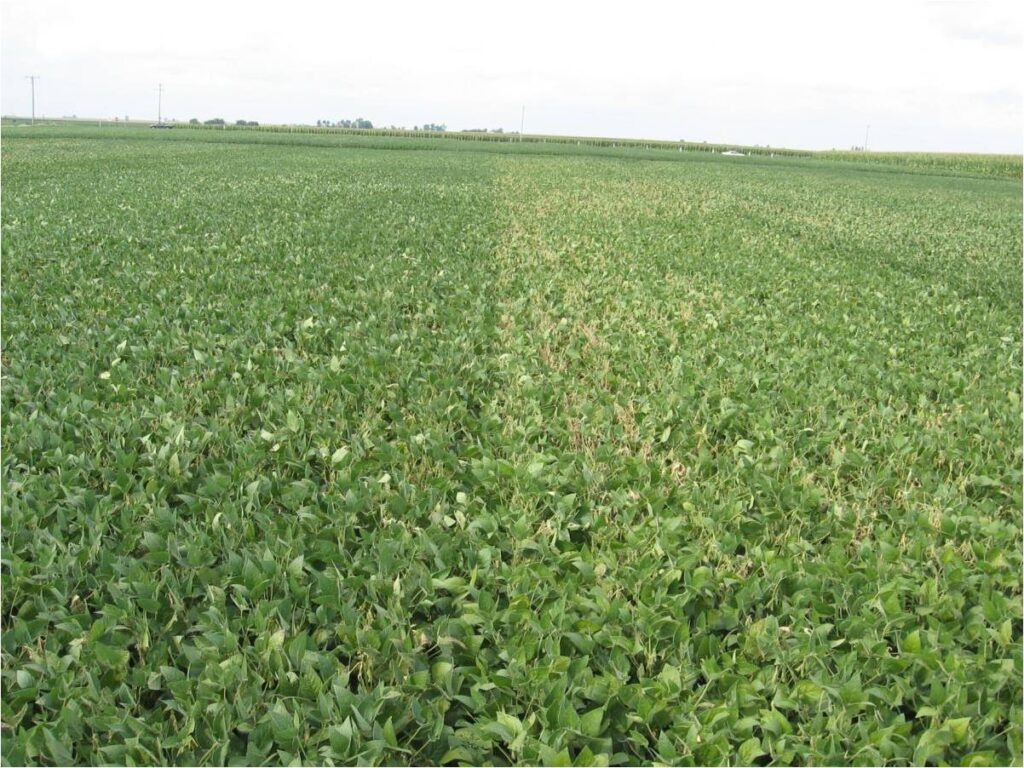Soybean Yield Components
Summary
Identifying agronomic practices that optimize pod count, bean count and bean weight will result in greater soybean productivity.
A joint project with Dr. Larry Purcell, University of Arkansas.
A multi-location preliminary study implemented by the University of Illinois Crop Physiology Laboratory discovered that the number and distribution of pods and beans on a soybean plant varied across environments and management practices. The results suggested that nearly 80% of soybean yield was achieved among the middle third of plant nodes (i.e., approximately between notes 7 to 14) and that yield differences were generally associated with the number of nodes which obtained approximately 2 pods per node and 6 beans per node. We hypothesize that increasing soybean yield requires a greater understanding of the physiological yield components, especially as this understanding relates to maximizing the inherent yield potential of the lower and upper thirds of the plant canopy. Thus, we are investigating the soybean effective filling period (seed filling rate and duration), final seed/pod number, pod retention, and crop growth rate as influenced by producer management practices.
Treatments included three agronomic management practices (P fertilization, foliar insecticide/fungicide protection, or both) across two varieties (early vs full-season) at Champaign in 2014. At weekly intervals beginning after the initiation of seed filling, the number and mass of seeds at nodes in the lower, middle, and upper canopy subsections were measured.
A joint project with Dr. Larry Purcell, University of Arkansas.
A multi-location preliminary study implemented by the University of Illinois Crop Physiology Laboratory discovered that the number and distribution of pods and beans on a soybean plant varied across environments and management practices. The results suggested that nearly 80% of soybean yield was achieved among the middle third of plant nodes (i.e., approximately between notes 7 to 14) and that yield differences were generally associated with the number of nodes which obtained approximately 2 pods per node and 6 beans per node. We hypothesize that increasing soybean yield requires a greater understanding of the physiological yield components, especially as this understanding relates to maximizing the inherent yield potential of the lower and upper thirds of the plant canopy. Thus, we are investigating the soybean effective filling period (seed filling rate and duration), final seed/pod number, pod retention, and crop growth rate as influenced by producer management practices.
Treatments included three agronomic management practices (P fertilization, foliar insecticide/fungicide protection, or both) across two varieties (early vs full-season) at Champaign in 2014. At weekly intervals beginning after the initiation of seed filling, the number and mass of seeds at nodes in the lower, middle, and upper canopy subsections were measured.
- Sampled nodes in the middle canopy region contained the largest proportion of total yield.
- Relative to other canopy regions, nodes at the top canopy subsection measured the highest seed growth rate (SGR) and shortest effective filling period (EFP) and were most responsive to crop management.
- Agronomic management improved yield though the response was variety dependent.
- Seed number was the primary yield component responsible for yield increases in the early season varieties, in contrast to seed mass, which predominately occurred for the more full-season varieties.
- Foliar protection treatments significantly increased seed number and mass in the middle and upper regions.
- Fertility treatments increased seed number in the middle and top, and seed mass in the bottom and middle.

These findings highlight the importance of variety selection and how the implementation of agronomic management was used to target specific canopy regions for increased yield.
